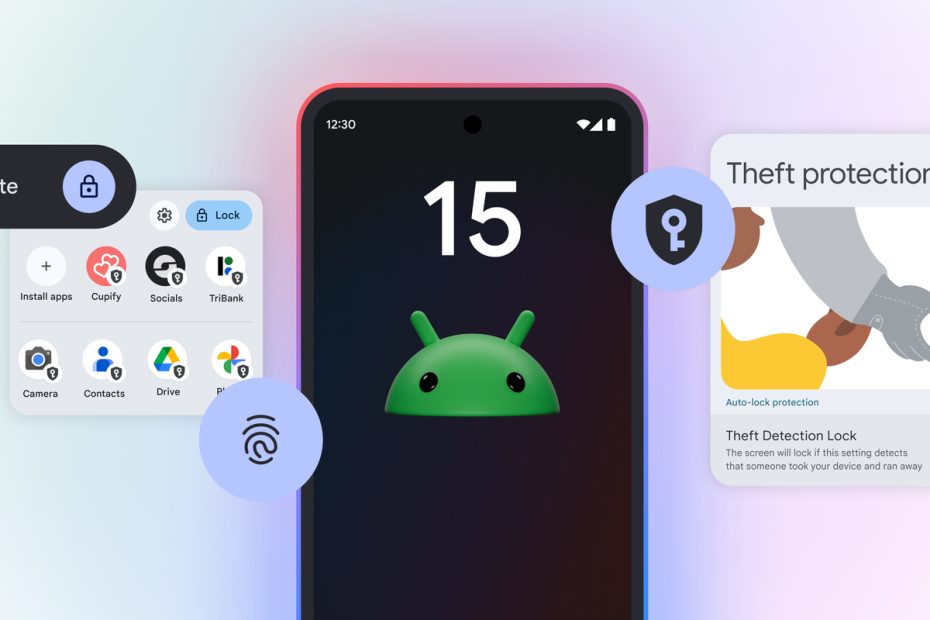At long last, Android 15 is officially rolling out to compatible Google Pixel phones (i.e. the Google Pixel 6 and newer), meaning many of the features already teased in various Android 15 betas are now available in their finished form.
Strictly speaking, Android 15 launched through the Android Open Source Project (AOSP) on September 3, but this is the first time that the update has been made available to actual Android users (in this case, Google Pixel users), rather than just developers and manufacturers. Pixel devices are first in line, with Samsung phones and other Android devices set to benefit from Android 15 “in the coming months.”
Even more confusingly, the full release of Android 15 coincides with the rollout of a separate Google Pixel feature drop, which includes some Android 15-specific upgrades, as well as a handful of more general Pixel improvements.
In any case, below, we’ve rounded up five of the best Android 15 features, all of which will make their way to non-Pixel Android phones soon.
Private Space
An image of Private Space running on an Android phone (Image credit: Android Police / Google)
If you’re keen to keep certain pieces of mobile content away from prying eyes, Android 15 introduces Private Space: a new password-protected area for storing your sensitive files, apps, and even notifications. In essence, the feature is similar to Samsung’s Secure Folder, though the latter can only store files, whereas Private Space can double as Fort Knox for many different types of content.
Incidentally, Private Space arrives on Pixel phones as part of Google’s aforementioned latest Pixel drop, though the feature is technically an Android 15 tool, meaning it’ll be coming to other Android phones soon.
Theft Detection Lock
(Image credit: Google)
We’ve been hearing about Google’s Theft Detection Lock feature since May, and it actually debuted in Brazil some time ago, but it’s now rolling out to Android users across the globe as part of Android 15.
Essentially, Theft Detection Lock uses AI to detect if your phone has been stolen and automatically locks it if it believes that’s the case. Google says Theft Detection Lock will look out for “common motion associated with theft” (presumably things like a quick movement out of one hand into another) and “proactively protect your data on the device.” Neat!
Predictive Back 2.0
The Predictive Back interface on a Pixel phone (Image credit: Google / Future)
An updated version of Predictive Back – which lets you preview the result of a gesture navigation action before committing to the action itself – debuted in the second Android 15 beta, and it’s now rolling out to Pixel devices properly.
The ‘update’ here is that Predictive Back is now readily available to all users; in Android 14, it was an optional developer feature. Now, gesture previews will occur by default (in compatible apps) when actions including back-to-home, cross-task, and cross-activity are triggered. Still confused? Check out the images above for a visual illustration.
Improved multitasking
(Image credit: Future / Lance Ulanoff)
This one applies to large-screen devices like tablets and foldables exclusively, but Android 15 brings Pixel 9 Pro Fold-level multitasking capabilities to other compatible Android handsets.
Specifically, you can now save pairs of apps to your home screen or taskbar in a single icon that, when tapped, opens both apps simultaneously in split-screen. This should make multitasking that little bit easier – if, for instance, you use your tablet for work, you can now bring up Slack and Google Sheets at the same time, or perhaps Google Drive and Gmail. It’s a small change, but a welcome one.
Furthermore, you can also now pin the taskbar to the bottom of your screen when apps are in use, eliminating the need to swipe up and hold for taskbar access away from the home screen (the taskbar will, of course, still disappear when you’re viewing media content).
Partial screen recording
Android 15 adds the ability to partially screen record content. In essence, when tapping the native screen recorder tool, you’ll be given the option to limit your recording to certain apps, regardless of whether you navigate away from those apps.
This should come in particularly handy for creators who film tutorial content but want to avoid having their private information (like email and Wi-Fi details visible in Settings) captured and erroneously shared as part of a screen recording.
You might also like
Best Pixel phones: these are the Google phones to buy right nowGoogle Pixel 9 Pro review: the AI phone is here, but the future is notGoogle Pixel 9 Pro XL review: Google’s AI gateway device
